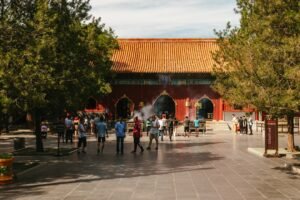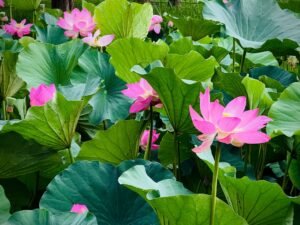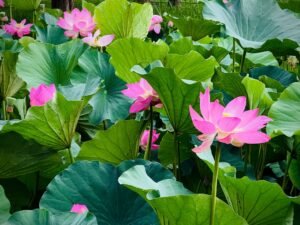

Discover Norway’s Official Language Today
When it comes to countries and their official languages, there are often some common assumptions. But what about Norway? Can you guess what language is spoken in this picturesque Scandinavian nation?
Prepare to be surprised, because the official language of Norway might not be what you expect.
In this article, we will delve into the linguistic landscape of Norway, explore the fascinating Norwegian language, its dialects, and the role of indigenous languages in preserving the country’s cultural heritage. Join us on this journey to discover the language that unites this unique nation.
Table of Contents
ToggleKey Takeaways:
- Norway has its own official language, which may defy common expectations.
- The Norwegian language is part of the broader Scandinavian linguistic family.
- Norway has a rich linguistic tradition with various dialects and indigenous languages.
- Language plays a significant role in shaping Norwegian society and cultural identity.
- The education system in Norway emphasizes the teaching and learning of the Norwegian language.
Norwegian Language: A Fascinating Linguistic Landscape
In this section, we will delve deeper into the Norwegian language and explore its origins and its place within the broader Scandinavian linguistic family. We will also uncover the rich linguistic diversity found in Norway, showcasing the country’s unique language landscape.
The Origins of Norwegian Language
The Norwegian language, a member of the North Germanic branch of the Germanic family of languages, has a fascinating history that dates back to the Viking Age. It shares similarities with other Scandinavian languages such as Swedish and Danish, but it also possesses distinct characteristics that set it apart.
“Norwegian is a beautiful language that has evolved over centuries, influenced by Norse, Old Norse, and other regional dialects. It reflects the rich cultural heritage of Norway and its close ties to its Scandinavian neighbors.”
Linguistic Diversity in Norway
One of the most intriguing aspects of the Norwegian language is the incredible linguistic diversity found within the country. Norway is home to a wide range of dialects, each with its own unique pronunciation, vocabulary, and grammar. These dialects are influenced by factors such as geography, historical events, and cultural interactions.
To illustrate the linguistic diversity in Norway, let’s take a look at a table showcasing some renowned dialects and their characteristics:
| Dialect | Region | Distinct Features |
|---|---|---|
| Bergensk | Bergen | Distinct pronunciation of vowels |
| Trøndersk | Trøndelag | Use of “æ” instead of “e” in certain words |
| Nordlending | Northern Norway | Unique vocabulary and intonation patterns |
Understanding Norwegian Language
For non-native speakers, learning Norwegian can be an enriching experience. It not only enables better communication in Norway but also opens doors to understanding the country’s rich cultural heritage and traditions. Learning the language can also enhance travel experiences, allowing individuals to connect with locals on a deeper level.
- Studying Norwegian can be beneficial for those interested in professional opportunities in Norway or with Norwegian companies.
- Understanding Norwegian can also help individuals decipher Norwegian literature, films, and music, providing a more immersive cultural experience.
- As a Scandinavian language, Norwegian shares similarities with Swedish and Danish, making it easier for speakers of these languages to learn Norwegian.
Overall, the Norwegian language offers a captivating linguistic landscape that reflects the country’s rich cultural heritage and diverse regional influences. Whether you’re interested in learning Norwegian to communicate effectively or to explore the intricacies of the language, delving into the world of Norwegian opens up a whole new understanding of Norway’s linguistic tapestry.
Dialects of the Norwegian Language
Norwegian, the official language of Norway, is spoken in a variety of dialects across the country. These dialects reflect a rich linguistic tapestry and offer insights into Norway’s regional diversity. Understanding the different Norwegian dialects is key to fully grasping the nuances of the language.
Each dialect has its own unique characteristics and pronunciations, often varying from one region to another. While the basic vocabulary and grammatical structure remain consistent, dialects add a distinct flavor to the Norwegian language.
In the southern regions of Norway, dialects like the Oslo dialect (Østnorsk) dominate. This dialect is influenced by Danish and Swedish, making it easier for speakers of other Scandinavian languages to understand. In contrast, the Trøndersk dialect in central Norway has a distinct rhythm and pronunciation that sets it apart.
The dialects in Western Norway, such as Stavangersk and Bergensk, have a unique melodic quality with strong influences from the region’s coastal geography. The dialects spoken in Northern Norway, like Nordnorsk and Tromsø dialect, have their own set of sounds and expressions.
It’s important to note that while the dialects may differ, Norwegians can generally understand each other regardless of the region they come from. This is because the educational system in Norway emphasizes standard Norwegian (Bokmål and Nynorsk) as the primary form of communication, ensuring mutual intelligibility.
“The diversity of Norwegian dialects truly reflects the vibrant cultural heritage of Norway. Exploring these dialects is like uncovering hidden gems, each with its own charm and character.”
By embracing and understanding the dialects, one gains a deeper appreciation for the linguistic richness of Norway and the communities that shape its identity.
The Role of Indigenous Languages in Norway
As we explore the linguistic diversity in Norway, it is essential to acknowledge the significant role played by indigenous languages in preserving the country’s rich cultural heritage. These indigenous languages, spoken by the Sami people and other ethnic minority communities, are an integral part of Norway’s identity and are deeply intertwined with its history.
The Sami language, known as Sámi or Samisk, is the largest indigenous language in Norway. It is spoken by the Sami people, who have inhabited the Arctic regions of Norway, Sweden, Finland, and Russia for centuries. The Sami language plays a crucial role in preserving their cultural traditions, ancestral knowledge, and unique way of life.
Efforts to revitalize and protect indigenous languages in Norway have gained momentum in recent years. Recognizing the importance of linguistic diversity, the Norwegian government has implemented measures to safeguard and promote the use of indigenous languages. These efforts include providing resources for language education, documentation, and research.
Language revitalization initiatives are also being undertaken by community organizations and educational institutions. These efforts aim to empower native speakers, encourage language transmission to younger generations, and create opportunities for language use in everyday life, cultural events, and media.
By supporting and revitalizing indigenous languages, Norway not only embraces its linguistic diversity but also ensures the preservation of its cultural heritage for future generations. The rich tapestry of indigenous languages contributes to Norway’s unique identity and serves as a reminder of the country’s deep connection to its ancestral roots.
Norwegian Language and Norwegian Society
The Norwegian language holds a significant place in shaping Norwegian society, playing a vital role in cultural identity, education, and national cohesion. Understanding the Norwegian language is integral to fully embracing the rich heritage and traditions of this Nordic nation.
One of the key ways in which the Norwegian language influences society is through its role in preserving and promoting Norwegian cultural heritage. Language acts as a vessel that carries the stories, values, and knowledge of the past, connecting current generations with their ancestors. Through the Norwegian language, Norwegians maintain a strong sense of cultural pride and identity.
Moreover, the Norwegian language is the medium through which education is imparted in the country. Learning the language allows individuals to actively participate in academic and professional settings, strengthening their connection to the broader Norwegian society. Proficiency in Norwegian opens doors to a wide range of opportunities, enabling individuals to fully engage with the local community and contribute to its growth.
Additionally, the Norwegian language plays a role in fostering national cohesion. It serves as a unifying force that brings people from diverse backgrounds together, creating a sense of togetherness and shared understanding. The ability to communicate effectively in Norwegian helps to break down barriers and build bridges between different social groups, promoting inclusivity and a sense of belonging.
“Language is the road map of a culture. It tells you where its people come from and where they are going.” – Rita Mae Brown
To further understand the impact of the Norwegian language on Norwegian society, let’s take a closer look at some statistical data:
| Indicator | Statistics |
|---|---|
| Percentage of Norwegians speaking Norwegian as their first language | 95% |
| Number of Norwegian dialects | Over 50 |
| Number of students enrolled in Norwegian language courses | Approximately 80,000 |
| Official language status of Norwegian | Recognized as an official language in Norway |
These statistics illustrate the widespread use and importance of the Norwegian language in Norwegian society. Now, let’s delve deeper into the language education system in Norway to understand how the language is taught and learned at different levels of education.
Language Education in Norway
In Norway, language education plays a vital role in ensuring that individuals have a comprehensive understanding of the Norwegian language. The education system in Norway places a strong emphasis on language learning from an early age, fostering effective communication skills and promoting a deeper connection with the country’s cultural heritage.
From primary school to university level, the Norwegian language holds a prominent position in the curriculum. Students receive dedicated language instruction, allowing them to develop proficiency in both written and spoken Norwegian.
Language Learning in Primary and Secondary Education
In primary and lower secondary education, Norwegian language classes focus on building a strong foundation in grammar, vocabulary, and comprehension. Students engage in various learning activities, including interactive exercises, reading exercises, and oral presentations.
As students progress to upper secondary education, they have the opportunity to study Norwegian language and literature in greater depth. This level of education allows students to refine their linguistic skills and delve into literary analysis.
Language education in primary and secondary schools also recognizes the importance of multilingualism. Many schools offer additional language courses, such as English, German, French, Spanish, or Sami, the indigenous language spoken by the Sami people in certain regions of Norway. This approach promotes intercultural understanding and opens doors to global opportunities.
Language Learning in Higher Education
At the university level, language education extends beyond the basic language skills to encompass specialized areas such as linguistics, translation, and interpreting. Universities offer degree programs in Norwegian language, literature, and Norwegian as a second language (NORINT). These programs equip students with advanced language competencies and a deep understanding of the Norwegian language’s historical and cultural contexts.
“Language education in Norway not only equips students with the necessary tools to communicate effectively, but it also fosters a greater appreciation for the Norwegian culture and heritage.”
Language Proficiency Requirements
In Norway, language proficiency requirements are essential for individuals seeking employment or higher education opportunities. Certain professions, such as teaching and healthcare, often require a high level of Norwegian language proficiency to ensure effective communication with colleagues and clients.
For individuals who seek to study in Norway as international students, demonstrating sufficient proficiency in the Norwegian language is often a prerequisite. Norwegian universities typically require applicants to provide evidence of language proficiency through standardized tests such as the Norwegian Language Test for Academic Purposes (Norskprøve for innvandrere) or equivalent qualifications.
| Language Proficiency Levels | Description |
|---|---|
| A1 | Basic understanding of Norwegian language, can engage in simple conversations |
| B1 | Independent user of Norwegian language, can communicate effectively on familiar topics |
| C1 | Advanced proficiency in Norwegian language, can comprehend and express complex ideas |
Language education in Norway continues to evolve to meet the needs of a multicultural society. Efforts are underway to support immigrants and refugees in acquiring the necessary language skills through language training programs and integration measures.
By prioritizing language education, Norway ensures that individuals have the tools to fully participate in society, engage in meaningful cultural exchanges, and deepen their understanding of the Norwegian language and its significance in the country’s rich heritage.
Promoting Language Diversity in Norway
In Norway, linguistic diversity is highly valued, and there are initiatives and policies in place to preserve and promote the rich array of languages spoken in the country. These efforts include a particular focus on protecting and revitalizing indigenous languages, which play a crucial role in preserving Norway’s cultural heritage.
One significant initiative is the Norwegian government’s support for indigenous language programs and projects. These programs aim to provide resources and opportunities for indigenous communities to teach and learn their native languages, ensuring their survival for future generations. Additionally, the government has implemented language revitalization programs in educational institutions, collaborating with indigenous language speakers to develop curricula and teaching materials.
Another important aspect of promoting language diversity in Norway is the recognition of the status and rights of indigenous languages. The Norwegian Parliament passed the Sami Language Act in 1987, granting official status to the Sami language and affirming its use in public services and administration. This act has been instrumental in preserving and promoting the Sami language and culture.
“Preserving linguistic diversity is not only a matter of cultural heritage but also enables greater social inclusion and understanding. It is crucial to create an environment where all language communities can thrive and contribute to the rich tapestry of Norwegian society.”
The Norwegian government also collaborates with language organizations, researchers, and community leaders to develop language policies and implement strategies that support linguistic diversity. These partnerships focus on raising awareness, promoting language learning, and creating platforms for cultural exchange and dialogue.
Furthermore, Norwegian society as a whole recognizes the importance of linguistic diversity and supports initiatives that celebrate and showcase the various languages spoken in the country. Language festivals, cultural events, and publications highlight the beauty and significance of different languages, fostering an inclusive and interconnected society.
In conclusion, Norway’s commitment to promoting language diversity is evident through its initiatives, policies, and collaborations. By protecting and promoting the Norwegian language, linguistic diversity in Norway, and indigenous languages, the country celebrates its multicultural heritage and creates an environment where all languages can thrive.
Conclusion
In conclusion, our exploration of the linguistic landscape of Norway has revealed the rich cultural heritage and linguistic diversity that contributes to the country’s unique identity. The official language of Norway is Norwegian, a Scandinavian language that holds significant importance in shaping Norwegian society.
Through our journey, we have discovered the fascinating world of Norwegian dialects, which add depth and variation to the Norwegian language. These dialects reflect the regional diversity within Norway, with each one carrying its own unique characteristics and influences.
Furthermore, we have learned about the crucial role of indigenous languages in preserving Norway’s cultural heritage. These languages represent the ancient roots of Norway and are essential in maintaining the connection between the past and the present.
Overall, our exploration has provided a deeper understanding of the Norwegian language, its dialects, and the linguistic diversity that enriches the country. By appreciating and protecting these linguistic treasures, Norway ensures the preservation of its cultural heritage and fosters a society that appreciates its multicultural past and present.
FAQ
What is the official language of Norway?
The official language of Norway is Norwegian.
Are there different dialects of the Norwegian language?
Yes, there are several dialects of the Norwegian language, each with its own unique characteristics and regional variations.
What other languages are spoken in Norway?
In addition to Norwegian, there are also a number of indigenous languages spoken in Norway, such as Sami and Kven.
How do Norwegians view the importance of language?
Language plays a significant role in Norwegian society, as it is closely tied to cultural heritage and national identity.
How is the Norwegian language taught in Norway?
The Norwegian language is taught in schools across various levels of education, and there are also language courses available for adults.
Are there efforts to preserve linguistic diversity in Norway?
Yes, there are initiatives and policies in place to protect and promote linguistic diversity, including the preservation of indigenous languages.
If you want to learn Norwegian, you can register for classes here. We look forward to hearing from you and helping you become fluent in Norwegian.





